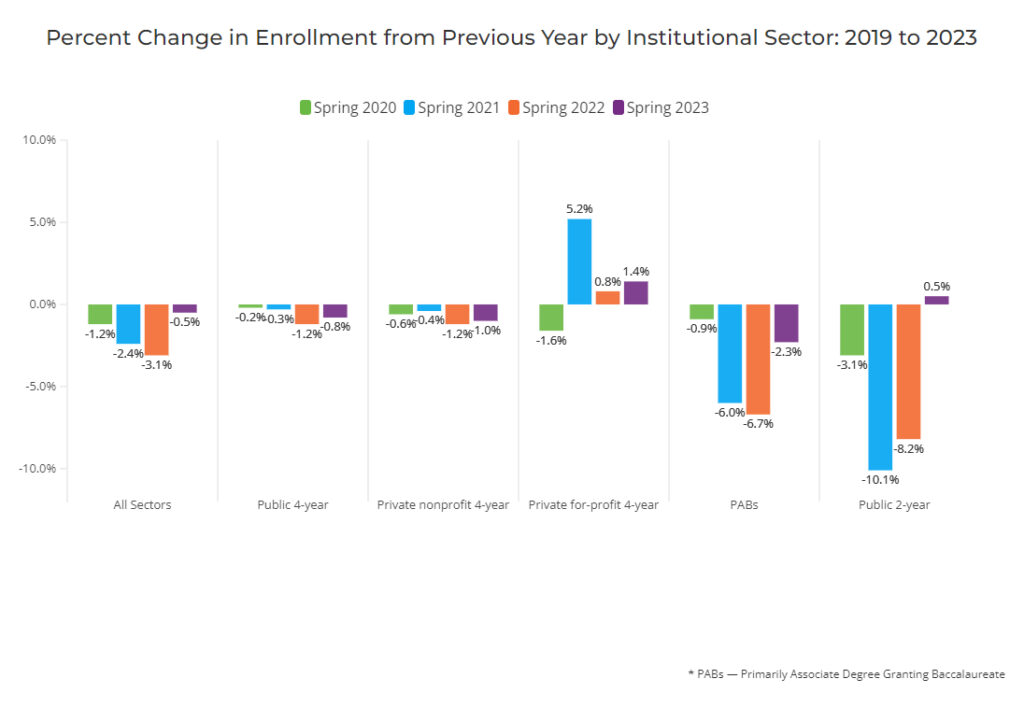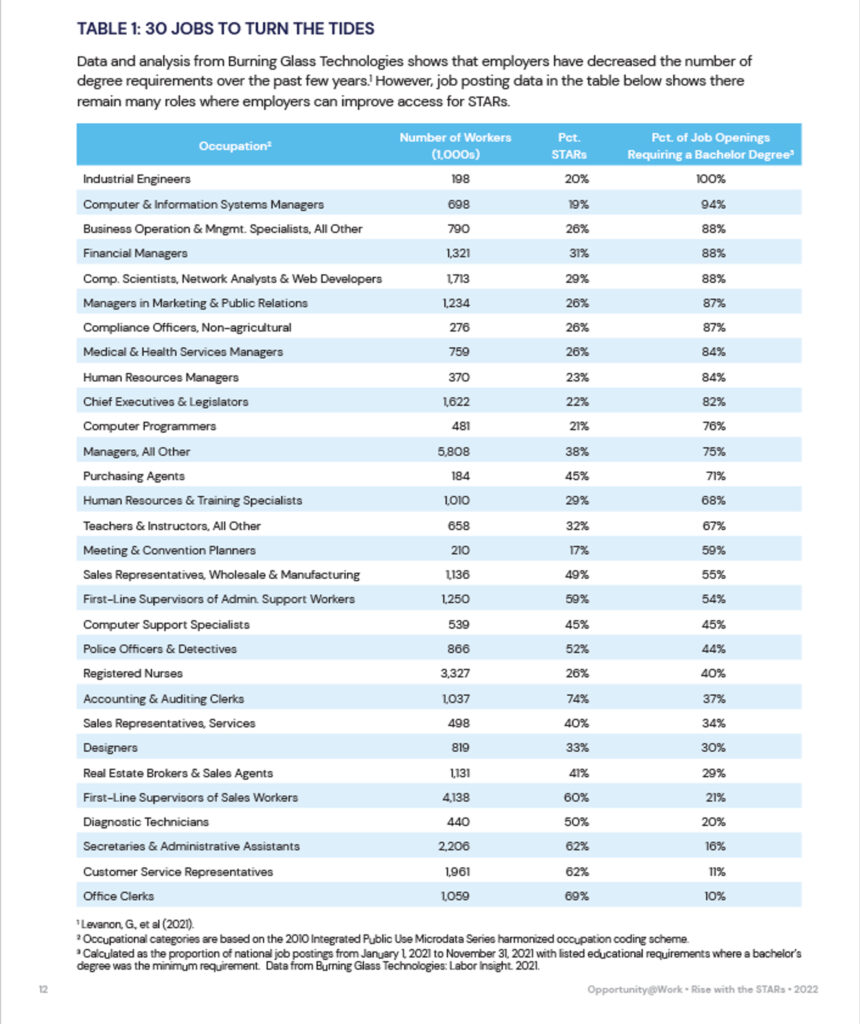The latest data from the National Student Clearinghouse Research Center shows that college enrollment continues to drop. US undergrad enrollment is down 0.5% year-over-year, for 4+ straight years of decline. Graduate-level enrollment is fairing even worse, down 2.2% from last spring.
Why are fewer people attending college?
A study conducted by HCM Strategists and Edge Research, with funding from the Bill & Melinda Gates Foundation, sheds some light on the whys behind this decline in college enrollment. The findings show that demographics alone aren’t the cause. In fact, psychographics reveal that potential students forgoing college are doing so because:
- They question the value/ROI of getting a degree (35%)
- They’re satisfied as is and college isn’t worth the opportunity cost (29%)
- They don’t see the value in getting a degree for themselves (19%)
- They see the value of a degree, but it’s too much pressure (18%)
With fewer workers attending college and employers already facing labor and skills shortages, organizations need to find alternative paths to sourcing and hiring talent. Thankfully, in what could be dark times for early career hiring, there is a shining beacon of opportunity: STARs.
STARs: Workers Skilled Through Alternative Routes
As more folks forgo a bachelor’s degree, there’s even more value in tapping into the 70+ million Americans who are STARs, or workers Skilled Through Alternative Routes. These other paths to gaining skills include community college, military service, training programs, learning on the job, and skills bootcamps.
Opportunity@Work, the nonprofit known for their Tear the Paper Ceiling campaign, highlights how organizations can utilize and continue building a stronger labor market. Their Rise with the STARs report shares findings for companies to “use as a foundation for action and a framework to unlock the skills of STARs within their hiring systems, talent pipelines, workforce strategies, and the workplace itself.”
Find hidden talent
Rising with STARs – driving value for all
STARs make up more than half of the active labor force in the US, yet have faced decades of diminishing upward mobility. Excluding workers Skilled Through Alternative Routes from middle- and high-wage jobs is blocking organizations from finding and developing talent who have potential despite not having a bachelor’s diploma.
To help organizations build more stable and sustainable workforces to drive innovation and growth, Opportunity@Work identified 30 critical occupations. These roles account for 3.1 million jobs, or 41% of the total jobs lost due to displacement of STAR workers. These occupations, including registered nurses, developers, and customer service representatives, do more than act as gateway and destination occupations for marginalized STAR workers. Hiring STAR workers for these occupations also fills in-demand roles for organizations, such as the ongoing shortage of nurses in the US.
See below for the list of 30 occupations, with more details in the full report:
How to enable growth with STAR workers
The road to filling critical roles and enabling growth for STARs and your organization is simple: hire STAR workers who have the skills you need, empower their development and upskilling, and promote from within so both employers and employees continue to grow. To start, audit your entire hiring journey for these 30 gateway occupations and test removing a bachelor’s degree from your job requirements.
As noted in the report, STARs can do these 30 gateway jobs that act as promising pathways. In fact, STARs make up at least 20% of the current workers in these occupations. Struggling to fill pipelines? Then there’s even more reason to build STARs into your hiring and internal mobility strategies. STARs are well represented in the low-wage origin jobs where employers commonly source for the gateway jobs.
As a real-world example, one of Harver’s customers removed the bachelor’s degree requirement for entry-level ad sales employees. Cutting the legacy degree requirement helped broaden an artificially constrained candidate pool to include STAR workers. And by assessing for soft skills and fit with Harver’s gamified behavioral assessments, this leading media and advertising company drove big improvements in quality of hire, ethnic and gender diversity, and recruiting efficiency. Now this organization has so many good ad sales associates that leadership is proactively looking for additional promotion opportunities.
The fast, easy way to rise with STARs
Workers who are skilled through alternative routes don’t need a bachelor’s degree. But even great organizations can need help objectively and efficiently assessing job seekers based on potential instead of pedigree.
Schedule a demo to learn more about how Harver can help you assess behavioral fit to objectively find STARS and other top talent even if they don’t have a college degree. If you’re in a hurry, you should know that Harver has readymade job profiles for all 30 gateway occupations for STARs (and 900+ other roles).





